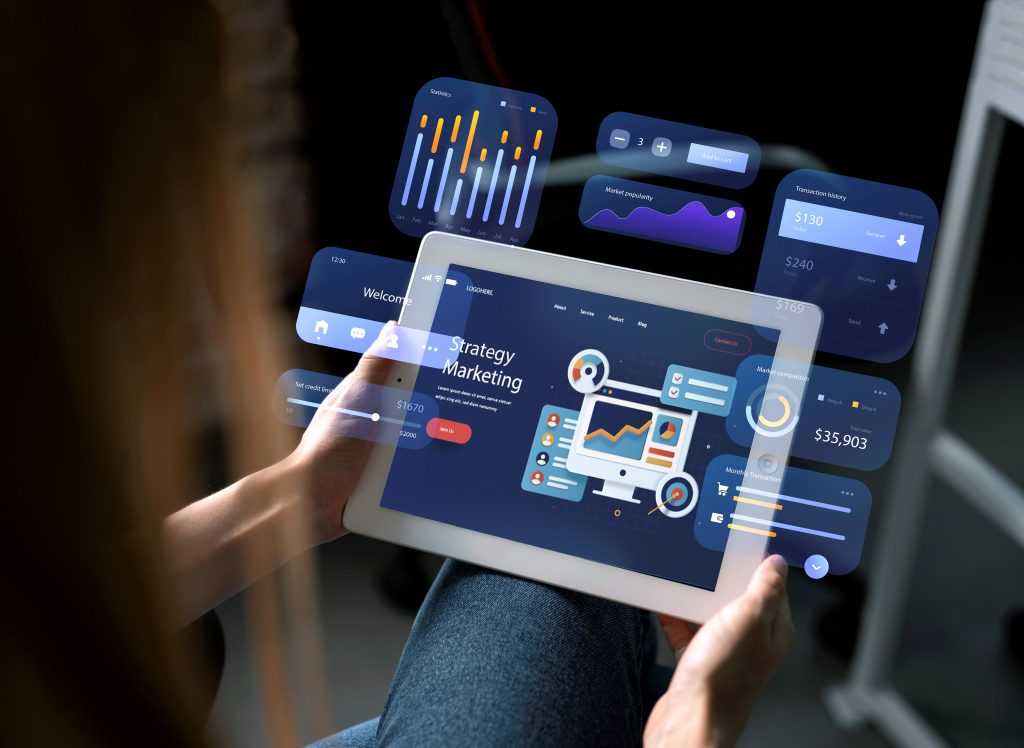
Digitization and the future of sales: navigating the digital landscape
ReadyForSocial™ is the only all-in-one program that can power your entire sales team on social media. Contact us to get started!
The third part of our blog series on modern sales practices and their connection with social selling focuses on how you and your sales professionals can navigate the digital landscape most effectively.
Our first article covered how social selling fits into the modern sales process. The second part explained the tools, training, and strategies necessary to enable your sales teams to engage in effective social selling, emphasizing the importance of continuous learning.
Today, you’ll learn:
- why traditional one-directional sales processes are inefficient and fail to meet individual customer needs.
- why tailored messaging and high-quality content are crucial for successful deals, with a preference for remote interactions rising among B2B buyers.
- how the collaboration of social selling bridges marketing and sales.
- how you can use social media platforms to foster meaningful connections with tailored messaging.
- how data can help you understand consumer buying behavior to facilitate effective engagement and sales strategies.
Before we jump into the specifics of how your sellers can navigate the digital landscape most effectively, let’s look at the transition sales teams must undergo these days and the common pain points sellers have to deal with
The pain points of modern sales life
We all know that the impact of digitization on the sales environment is profound, ushering in an era where businesses increasingly gravitate toward digital channels to connect with customers and drive revenue. But, while innovative technology and new trends offer many benefits, there are also some pain points companies must first address and overcome.
One of these is the emergence of new digital means of selling, which have become hot topics even among organizations less traditionally associated with sales and marketing, such as law firms and doctor’s offices. While industries like the technology sector have long embraced digital channels for sales, others, like healthcare and manufacturing, have been slower to adapt, often relying on established sales models. However, as baby boomers retire, these industries face an existential crisis, compelling companies to explore newer digital means of growth or risk obsolescence.
But there is more! Social media, a rich source of information for buyers and valuable intelligence for sellers, remains underutilized in many sales campaigns. Despite its potential to drive engagement and inform strategic decisions, social media is not fully integrated into sales and marketing efforts, leaving revenue goal owners eager for change. The reluctance to leverage social media effectively represents a missed opportunity for companies to tap into a vast reservoir of insights and connections that can drive business growth in the digital age.
So, how do we go about it to fix these problems and establish long-term solutions to drive success in the modern sales world? We’ll tell you below.
Modernizing sales practices

In many organizations, the sales process has traditionally followed a one-directional approach: marketing delivers campaigns, content, and leads while sales teams work to capitalize on these resources. However, this outdated model is often plagued with inefficiencies. Marketing efforts may generate prospect lists but often lack validation for target accuracy. Meanwhile, sales teams conduct their own prospecting and lead nurturing, which proves to be labor-intensive and ineffective at scale.
A Salesforce study highlights the importance of tailored messaging and high-quality content in driving successful deals, with 70 percent of sales professionals emphasizing the value of personalized messages and 57 percent citing the significance of top-notch content. And a 2020 study by McKinsey has shown that only about 20 percent of B2B buyers said they hope to return to in-person sales, even in sectors where field sales models have traditionally dominated, such as pharma and medical products.
Additionally, 70-80% of B2B buyers prefer remote human interactions or digital self-service. Buyers are willing to spend significant amounts of money based on purely remote interactions or digital self-service (32% willing to spend between $50 and $500k, 12% between $500k and $1m, and 15% over $1m).
Despite these findings, the linear flow of information from marketing to sales often results in generic messaging and content that fail to meet individual sales reps’ and customers’ unique needs. Consequently, nurturing customer relationships becomes challenging, compounded by the absence of proper tools and limited insights into customer behavior, further hindering the development of effective sales strategies.
Embracing the digital sales evolution
The right digital tools and the knowledge to use them correctly will enable your sales team to engage consumers more precisely, facilitate customer-driven information acquisition, and streamline the purchasing journey for an increasingly discerning clientele (we covered this in detail in our second article). The advent of social selling platforms, social networks, AI predictive analytics, and other sophisticated data solutions heralds a new era of adaptable selling strategies in the digital business landscape.
What distinguishes this modern approach from its predecessor? At its core lies social selling—a transformative method that leverages social networks for marketing outreach. Research indicates that over 72 percent of sales professionals incorporating social selling techniques into their sales processes have surpassed their peers, achieving quota targets 23 percent more frequently. Through social media channels, consumers are continually exposed to updates on product features, industry trends, and reviews, offering unprecedented access to product details long before contemplating a purchase. This heightened visibility and engagement translate to accelerated entry into the sales funnel and expedited decision-making processes, ultimately shortening the path to conversion. Enhanced interaction on social platforms facilitates rapid engagement, nurturing, and decision-making, revolutionizing the sales cycle as we know it.
Social selling bridges marketing and sales
In contrast to traditional selling models that often operate in isolation, digital selling fosters collaboration between marketing and sales teams, cultivating a more cohesive and synergistic selling environment. Sales professionals now play an active role in shaping the content they share across their social networks, influencing the creation of reports and blog posts to drive interest and awareness.
Research indicates that over 84 percent of social sellers utilize LinkedIn to engage with customers and prospects, nearly half leveraging X (formerly Twitter). This collaborative approach eliminates the need for marketing teams to speculate on content resonance; instead, insights from sales teams, social media metrics, and CRM data provide real-time feedback, empowering organizations to tailor their strategies with precision and agility.
Social selling builds meaningful connections with tailored messaging

With the expansive reach of social media, engaging with your target audience has never been more accessible and impactful. Sales teams now wield a direct conduit to prospects and customers, granting them the authority to disseminate diverse forms of product information or thought leadership content tailored to individual preferences. This capability empowers sellers to execute one-to-one marketing initiatives on a vast scale while continuously monitoring success metrics in real time.
Today, buyers navigate through approximately 57 percent of the purchase process independently before engaging with sales professionals. They actively seek out information online and across social media platforms, absorbing reviews, pitches, and opinions, effectively priming themselves for interaction with digital sellers. And the statistics prove that they are willing to do so.
Social selling is driven by data. And data drives success
These days, data reigns supreme, revolutionizing numerous marketing functions with the aid of predictive analytics and advanced data science techniques. These tools streamline the process of uncovering consumer buying behavior, empowering marketing and sales teams to delve into the digital footprints of their audience. Armed with this insight, teams can craft dynamic content tailored to resonate with specific segments of their target market. After all, the more intimately acquainted you are with your customers, the more effectively you can engage and sell to them.
It’s your turn to navigate the digital landscape like a pro
Without a doubt, the contemporary digital selling environment within sales and marketing organizations surpasses its predecessors by leaps and bounds. By capitalizing on shifting perspectives regarding social media’s role in sales and customer relations and harnessing the power of data alongside digital sales productivity tools, organizations are achieving unprecedented levels of synergy between marketing and sales, ultimately driving greater success in the digital realm. Are you ready to jump in?

